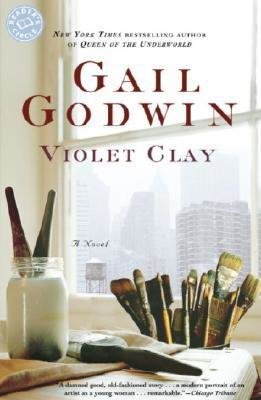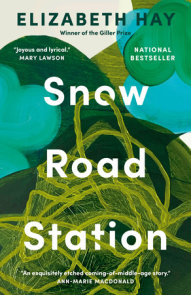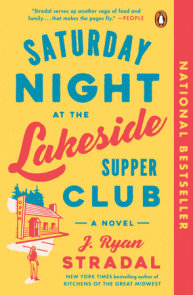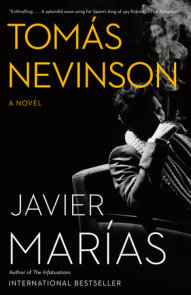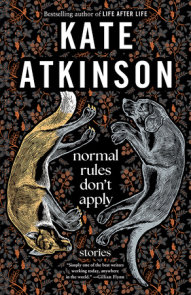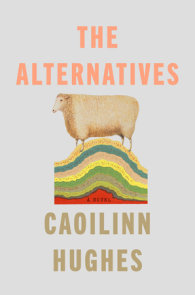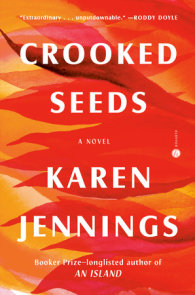READERS GUIDE
Questions and Topics for Discussion
1. Violet comes to comprehend her uncle Ambrose’s failed ambitions just as her own life seems to hit a dead end. What were your dreams for your life? Have they been fulfilled, abandoned, or diverted? What was the key episode that marked the transition? Does your story parallel Violet’s in any way?
2. The essence of “gothic,” Milo says, at the end of chapter 14, has to do with family secrets that we tend to forget, “except when they manifest themselves in some form of brooding terror.” How well have you known the brooding secrets of intimate partners? How dangerous are they?
3. Look at the romantic relationships in Violet Clay. Who finds their right mate? What are the most positive things that a character does for his or her development? Are bad relationships harmful traps or steps in an evolution of personality? How do you get out of a bad relationship?
4. If an epigraph at the beginning of a novel is a writer’s secret message to a reader (“here’s what you should be aware of, here’s what lies behind my tale”), how does the quote from The Magic Flute suggest you approach Violet’s story?
5. Godwin is known for weaving references to other books, music, and food into her novels. A reviewer once wrote: "After reading a Godwin novel, you find yourself going to the library to check out the book one of her characters has been reading, you ask the record store for her music, you cook her food" (Beverly Lowry, on A Southern Family, The New York Times Book Review, October 11, 1987). Can you cite examples of this? Did you find them effective and helpful to you as a reader?
6. Godwin develops her story along several lines, including through the metaphor of color. How does she play on the color violet? What does the color violet mean to you, and how does that compare with others’ subjective impressions of it?
7. Godwin is considered by some to be writing within a Jane Austen tradition, which is sometimes considered mannered. Austen, however, expressed wicked insights and Godwin does the same in a contemporary vein. Share Godwin’s wicked insights and suggestions. Should a writer temper shocking material?
8. Violet Clay begins with a view of Violet in her studio. Violet than flashes back to her arrival in New York nine years earlier, and then further back to her stay at her grandmother’s and her marriage to Lewis. In present time again, Violet loses her job and goes home and drinks. She recalls Ambrose giving her an inaugural tour of New York City, falls asleep, and awakens to a phone call that delivers the news of her uncle’s suicide. How much of our real lives is consumed by reveries? Do our reveries sense, foreshadow, or set up what is to come? Are there patterns to our life stories–or do such patterns exist mostly in fiction?
9. In Godwin stories, loss of consciousness and news of horror are often paired. Why is this a theme in Godwin’s works?
10. Ambrose’s novel featured a Byronic hero. What is that? Is such a hero obsolete? (See the interview with Godwin in this volume.)
11. In what ways is the Gothic romance related to ghost stories, or, at least, hauntings? Did you notice the reference to Henry James’s The Turn of the Screw (Milo has a print of Charles Demuth’s illustration for it); Milo’s consultations with his late mother (chapter 6); and Violet’s dialogue with Ambrose (chapter 16) as you read? What is the closest you have ever come to encountering a spirit?
12. What do you make of dreams, and of the value of having a dialogue with your own, as Violet suggests Milo do with his dream of the murderous mother? What about directing your dreams, as Violet does in chapter 12?
13. What do you make of fairy tales? Do they represent a catalog of psychological truths? What are the ways in which fiction writers incorporate fairy tales into their work? How does Godwin? Note the references to Rapunzel, Little Red Riding Hood, the Demon Lover, etc., in Violet Clay. What fairy or folk tales do you find to be particularly pertinent to your life?
14. To what extent does the pace and authenticity of a story depend upon how it skids into surprisingly new territory along the way? Do straightforward narrations disappoint you at all? Where does Violet Clay shift? (Take a look at chapters 8, 11, and 18, for instance.) Are such shifts the mark of a good novel?
15. “I found myself wondering if you could ever know what someone was really like,” Violet muses in chapter 8. “Perhaps no one had a stable personality, but people simply vibrated different emotional frequencies, depending on the lights or darknesses of the moment.” What do you make of this?
16. Mothers perform many different roles in Violet Clay. There’s Milo’s loving relationship with his mom, and his dream and novel about the vengeful mother; Sheila’s nervous breakdown after her mother’s death; Ambrose’s letters to his mother, and his novel, Capriccio; Minerva’s mother’s ashes; and more. To what extent do mother stories explain a character?
17. How important is it to represent characters’ sex lives in realistic psychological novels?
18. “Marrying your uncle was the only romantic act I ever committed,” Carol Gruber tells Violet. Is there at least one such moment in everyone’s life, and how does it determine their fate?
19. What are demons?
20. The painting that makes Violet famous in the end is titled “Suspended Woman.” It is revealed in a chapter titled “Sketches for a New Woman.” How would you characterize the new woman, who is no longer the “fleeing maiden”? Godwin boldly defines such a character, personifying her in Samantha–and perhaps also in her offspring, “Cheyenne.” What does the last chapter say about such characters?
21. Godwin mentions on pages 348—349 that she should have cut the last paragraph of Violet Clay. Do you agree with her?









